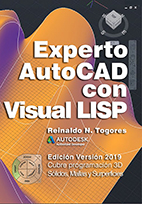By Reinaldo N. Togores |
The Higher Institute for Industrial Design (ISDI) was created in 1984 in response to the requirements of top-level design specialists, needed for the country's socio-economic development, which was organically subordinated to this activity's National Bureau (ONDI), under the Central Planning Board (JUCEPLAN).
I was a professor at ISDI since its founding until 1991, teaching there the first furniture and ceramics workshops, in addition to the Basic Design course.
In 1984 Ivan Espín finally fulfilled his dream of creating a School of Design in Cuba, this time the definitive one, after his first attempt (1970-1972) -then within the recently formed Ministry of Light Industry- disappeared shortly after the then minister, Enrique Escalona, was dismissed from his position.
A deep friendship linked me to Ivan and his wife Olga Astorquiza since the reopening of the University of Havana's School of Architecture in 1959. We were together in the initial attempts to promote Industrial Design as part of the Light Industry's Products Development Department about 1968. The design team formed by my wife Maria Teresa Muñiz, architect Heriberto Duverger and myself from 1970 to 1972 in the Furniture Industry's Technical Department represented a continuation of the efforts of a similar team that Ivan led back in 1968, which included Eva Björklund, Jule Amado and Manuel Miyar.
So it was no surprise when I received in 1984 from Ivan, then Director of the National Office of Industrial Design (ONDI), an invitation to form part of the new Higher Institute of Industrial Design's team of teachers. It included many old friends and colleagues. As Rector, Lourdes Martí, my fellow student in the career of Architecture. Many of the other teachers came from the School of Architecture's Department of Basic Design of which I had been part since its creation in 1972. Among them, the Architects Jesus Sánchez as Vice Rector, Antonio Cuan Chang, Pepín Espinosa, Alfredo Pong, Antonio Cepero and Armando Cremata.
As the building at Calle Belascoaín was not yet available, the first course was held in the Miramar residence at Calle 22 and 1st Avenue. That first year I taught the Basic Design course, the same I had been teaching since 1972 at the J. A. Echeverría Polytechnic Institute's School of Architecture.
With the availability of the Calle Belascoaín building, besides continuing with the Basic Design course for freshmen, I began teaching in specialized design workshops, the first one dealing with Furniture and later devoted to Ceramics. For this last subject we designed a specialized workshop, with the advice of my colleague in the Ceramics Section of the Cuban Association of Craft Artists (ACAA), Enrique Vazquez Nerín, who also acted as a teacher in that first course, along with the Architect Pepín Espinosa.
A highlight in the promotion of design for the Cuban ceramics industry took place in 1987. That year we took part along with a group composed of professors of this specialty at ISDI, specialists working at the National Office of Industrial Design (ONDI) and technicians and designers from the Ceramic Industry, in the Seminar "Ideen und Lösungen für die Herstellung von Hausholts und Hotelgeschirr in Kuba" (Ideas and Solutions for the Elaboration of Domestic and Hotel Tableware in Cuba) organized in coordination with the Amt für Industrielle Formgestaltung (Agency for Industrial Design) of the German Democratic Republic that was held at the Bauhaus facilities in Dessau. As a result of this activity, a proposal was made, which was patented, for a domestic tableware designed to fulfill the population's needs. Unfortunately, that proposal remained, like so many others, in mere plans and prototypes.
In 1988 I was surprised by the news of Ivan Espín's dismissal of as Director of the ONDI and of Lourdes Martí as the Rector at ISDI. As in many cases, the reasons for those changes were never disclosed. Only slanderous rumors (I've heard about three or four versions, all different) that were spread sotto voce. The position of Rector was occupied by my partner in the Ceramics workshops, Pepin Espinosa. His tenure in that position was short-lived, being replaced by the end of 1990 by Architect Pepe Cuendias, a Professor from the School of Architecture with a strong political background as Party member.
In those years I had dedicated my time increasingly to my work as an independent artist in the fields of Ceramics, Furniture and Interior Design, Mural Graphics and Exhibition design. So my final year as a professor at ISDI was that of 1990-1991 where, besides the first year Basic Design course, I taught the subject of Surfaces Design I and II, where the historical evolution of decorative styles as applied to ceramics, finishing techniques and decoration were discussed. It included practical training in the school workshops as well as a final assignment in the industry.
Regarding Ivan Espín, the school's founder, soon after he was dismissed from his position he emigrated to Ecuador with his wife Olga and their daughters, where he remained until the end of his days. We know that he continued to be linked to the activities of Industrial Design, acting as president of the Latin American Association of Industrial Design (ALADI) for a second period between 1989 and 1991.
His article "Diseño, sustento de la producción" published in the inaugural issue of the Mexican magazine Diseño y Sociedad1 ends -perhaps somehow as a testament- by saying:
"You cannot jump from the nothing or the little we have, as the case may be, to the development that to other countries it has taken decades or even centuries to achieve, depending on how you consider it. But whatever the route to follow for the phased development of design, and irrespective of the institutions or ways adopted, our theme ends here, for our intention has been none other than promoting awareness of their need, which is always the first step. "
1.- Diseño y Sociedad. No. 1, 1991Universidad Autónoma Metropolitana. Unidad Xochimilco.Pages. 47-57






